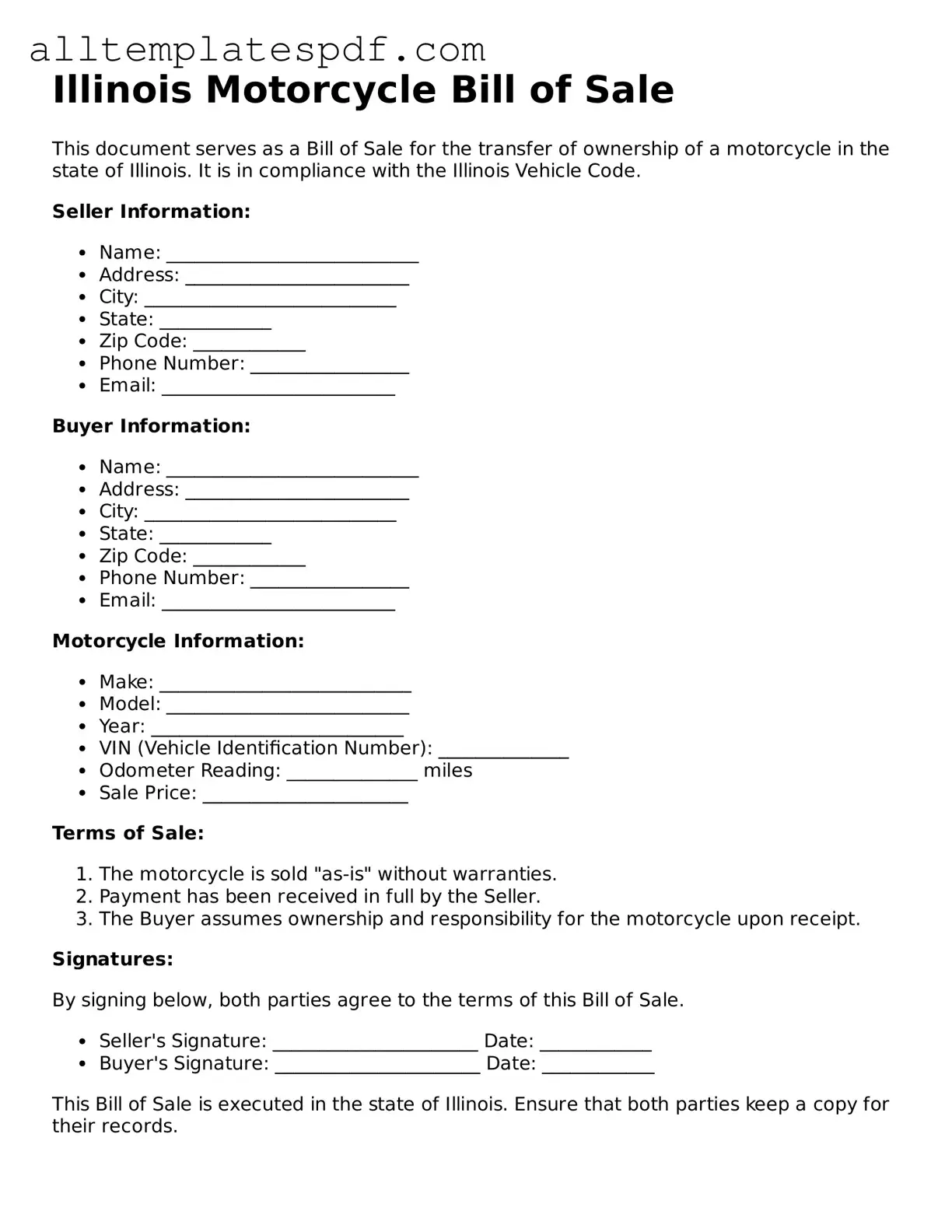Filling out the Illinois Motorcycle Bill of Sale form can be a straightforward process, but many people make common mistakes that can lead to complications later on. One frequent error is failing to include all necessary information. Buyers and sellers must provide details such as the motorcycle's make, model, year, and Vehicle Identification Number (VIN). Omitting even one piece of information can create confusion and potentially complicate the transfer of ownership.
Another mistake often seen is incorrect spelling of names or addresses. Accuracy is crucial. If the seller's or buyer's name is misspelled, it may cause issues when registering the motorcycle. Double-checking all written information can save time and prevent headaches down the line.
People also sometimes forget to include the sale price. This detail is essential not only for the transaction but also for tax purposes. Leaving it out can lead to misunderstandings or disputes about the value of the motorcycle. It’s important to ensure that the sale price is clearly stated and agreed upon by both parties.
Some individuals neglect to date the document. A bill of sale should always include the date of the transaction. Without it, there could be disputes about when the ownership transfer occurred, which can complicate matters if any issues arise later.
Another common error is not signing the form. Both the buyer and the seller must sign the bill of sale to make it legally binding. If one party forgets to sign, the document may not hold up in the event of a dispute.
In addition, many people overlook the importance of keeping a copy of the bill of sale. After completing the form, both parties should retain a copy for their records. This documentation can be vital if questions arise about the sale or if any issues occur with the motorcycle in the future.
Some individuals fail to understand the implications of the bill of sale. This document serves as proof of ownership transfer, and it is important to recognize its significance. Not treating it with the necessary attention can lead to future ownership disputes.
Another mistake is not verifying the VIN against the motorcycle. Ensuring that the VIN on the bill of sale matches the one on the motorcycle is crucial. A mismatch can raise red flags during registration and may lead to legal issues.
Lastly, people sometimes rush through the process without reading the entire form. Taking the time to read through the bill of sale ensures that all terms are understood and agreed upon. This careful approach can prevent misunderstandings and ensure a smooth transaction.
